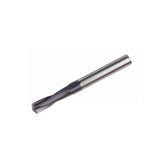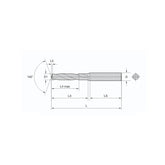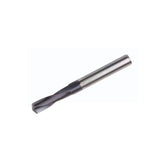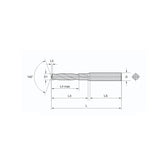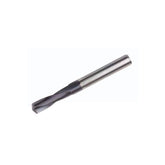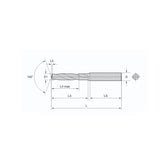What Effects Does Natural Frequency Have on Carbide Micro Drill Bits?
The Influence of Natural Frequency on Carbide Micro Drills Bits
In the world of precision manufacturing, carbide micro-drills are the unsung heroes that quietly play a crucial role. They penetrate various materials with precision at high rotational speeds, creating perfect holes. But did you know that the performance of these seemingly inconspicuous drills is closely tied to a mysterious concept called "natural frequency"? Today, we explore this sophisticated topic and examine how natural frequency affects carbide micro-drills.
The Nature of Vibration
Imagine being a musician: when you strike a hollow wooden pipe, it produces a specific pitch – its natural frequency. Similarly, every object has its unique vibration rhythm, known as its natural frequency. This frequency is most evident during free vibration and determines how the object responds to external excitation.
For carbide micro-drills, the importance of natural frequency is self-evident. During high-speed rotation, drills are subjected to various forces including centrifugal force, cutting force, and friction. If the frequency of external excitation matches the drill's natural frequency, resonance occurs – much like how a microphone produces piercing feedback when a singer hits a specific pitch.
Resonance Risk
Micro-drills are most vulnerable at 30-70% of max RPM where resonance risk is highest. This critical zone requires careful speed selection to avoid catastrophic failure.
Optimal Speed Range
Modern drills perform best at 80-95% of max RPM. This high-speed range minimizes resonance while maximizing cutting efficiency and tool life.
Resonance spells trouble for micro-drills. During resonance, vibration amplitude increases dramatically, leading to higher risks of drill breakage, hole position deviation, and irregular hole geometry. Picture machining a precision component only to have misaligned or polygonal holes due to drill resonance – a deeply frustrating outcome.
How then do we avoid resonance? This requires a deep understanding of the drill's natural frequency and selecting appropriate rotational speeds. Micro-drill vibration speeds typically range between 20,000 to 100,000 RPM – a range highly susceptible to resonance. Modern drilling machines can reach 200,000, 300,000, or even 350,000 RPM, demanding even greater caution in speed selection during high-speed machining to prevent resonance.
Optimizing Performance
Optimal speed selection not only prevents resonance but also enhances machining quality and efficiency. Similar to how matching your stride to your heart rate stabilizes running, proper rotational speed allows drills to penetrate materials smoothly, producing more precise holes with superior surface finish.
However, the challenge deepens. A drill's natural frequency isn't constant. When a micro-drill enters a workpiece, its stress and support conditions change instantly. Contact between the drill tip and workpiece adds a head constraint, instantly increasing the natural frequency. Furthermore, as the constrained length grows, the natural frequency continues to rise. This phenomenon is critical for understanding how boundary condition changes affect natural frequency and how to optimize drill performance through boundary adjustments.
To investigate this, scientists conducted extensive simulation experiments. They confirmed that natural frequency increases immediately after a micro-drill enters a workpiece, with the magnitude of increase depending on factors like drill material, geometry, dimensions, and workpiece material/thickness. These findings provide valuable theoretical insights for predicting and controlling drill vibration.
Practical Applications
In practical applications, knowledge of natural frequency optimizes drilling processes. For example, when machining PCB boards, selecting appropriate speeds and feed rates based on the drill's natural frequency and workpiece properties prevents resonance during operation. Additionally, modifying drill geometry, dimensions, and cutting parameters further improves machining quality and efficiency.
Natural frequency research also enables predicting and preventing drilling defects. Polygon-shaped hole openings, for instance, often correlate with drill vibration. By analyzing natural frequencies and vibration modes, we can identify conditions prone to polygonal holes and implement preventive measures such as adjusting spindle speed or using specialized tool holders.
In the realm of carbide micro-drills, natural frequency research transcends theory – it's a practical imperative directly impacting drill performance, machining quality, and efficiency. Thus, we must prioritize studying and applying natural frequency principles while continuously exploring new methods to optimize drill performance.
